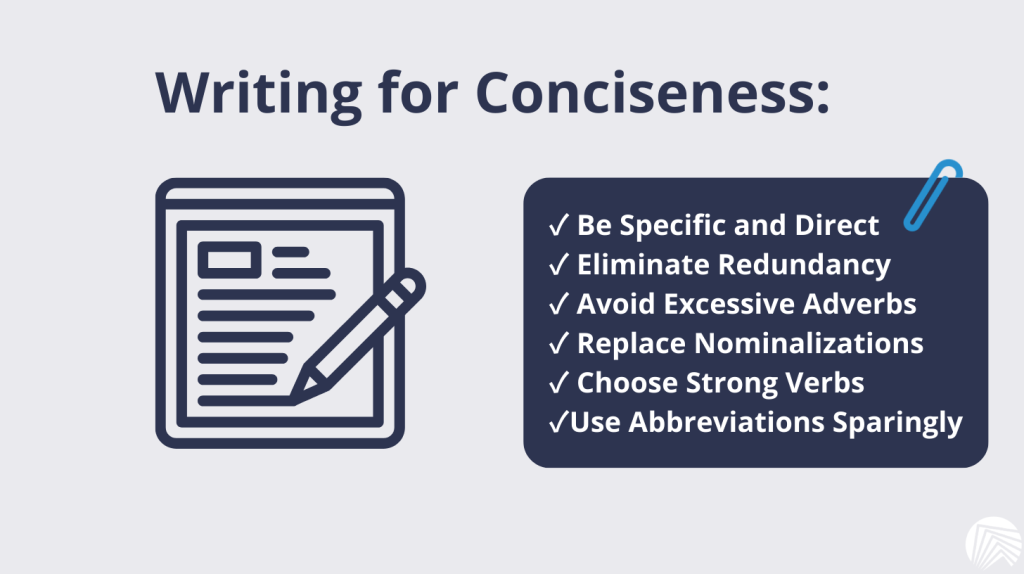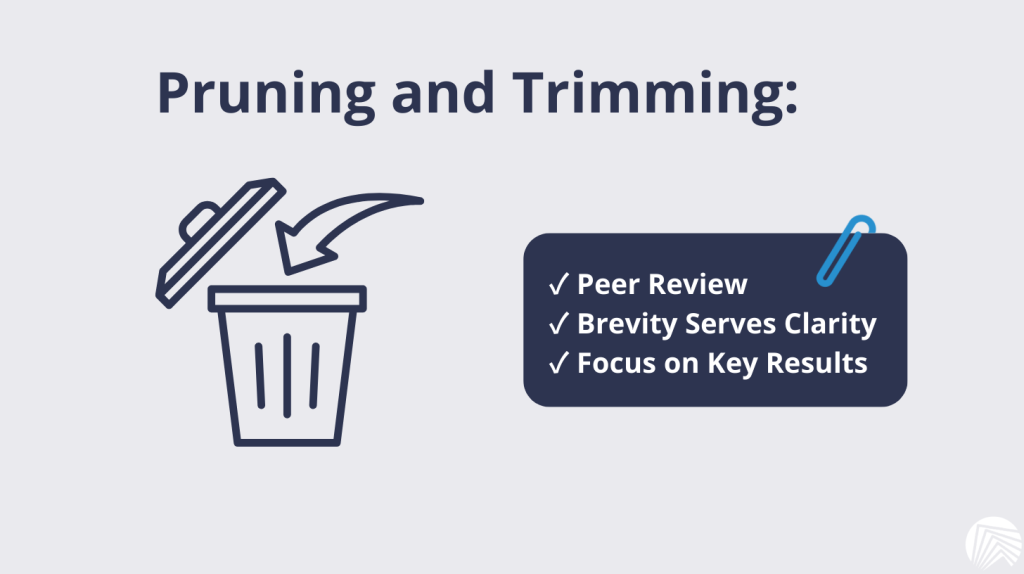Scientific research is built on the foundation of clear and concise communication. A well-structured and succinct and concise science manuscript not only conveys your research effectively but also enhances its readability and impact. Unfortunately, many manuscripts suffer from verbosity, excessive word counts, and redundant content. In this article, we’ll explore practical strategies for writing your science manuscript concisely and trimming unnecessary word counts while maintaining the integrity and quality of your research communication.
Also read:
Writing a Concise Science Manuscript in 4 Easy Steps:
- Pre-Writing Preparation
- Writing Strategies for Conciseness
- Pruning and Trimming
- Streamlining Citations and References

Concise Science Manuscript: The Importance of Conciseness
Before diving into the strategies, it’s crucial to understand why conciseness is essential in scientific writing.
Reader Engagement
Concise writing captivates readers and holds their attention. When your manuscript is clear and to the point, readers are more likely to engage with your research and comprehend its significance.
Journal Requirements
Many scientific journals impose strict word limits on articles. Failing to meet these limits can delay review or result in rejection. Writing concisely ensures compliance with journal guidelines.
Effective Communication
Concise writing is synonymous with effective communication. It conveys your research findings efficiently, reducing the risk of misinterpretation or reader fatigue.

Pre-Writing Preparation
Efficient manuscript writing begins with meticulous pre-writing preparation. Here are some strategies to set the stage for concise writing:
Clear Objectives
Define your research objectives and key messages before you start writing. Having a clear roadmap will help you stay focused and avoid unnecessary tangents.
Example: If your study aims to determine the effects of a specific drug on a particular medical condition, ensure that every section of your manuscript contributes to this central theme.
Create an Outline
Create a well-structured outline for your manuscript. An organized framework will prevent you from meandering and including irrelevant details.
Example: Outline the key sections of your manuscript, such as Introduction, Methods, Results, and Discussion, and allocate word limits for each section.

Writing Strategies for Conciseness
With a solid pre-writing foundation, you can employ the following writing strategies to reduce word counts while preserving the essence of your research.
Be Specific and Direct
Use precise language to convey your ideas without ambiguity. Avoid vague terms and excessive descriptions.
Example: Instead of “The patient showed a remarkable improvement in a very short period,” you can write, “The patient improved significantly within 1 week.”
Eliminate Redundancy
Review your manuscript for redundant phrases and unnecessary repetition. Omit repetitive explanations and redundant qualifiers.
Example: Instead of “The results of the study revealed that X was observed in all cases without exception,” you can write, “The study results demonstrated that X occurred universally.”
Avoid Excessive Adverbs
Limit the use of adverbs, as they often add unnecessary bulk to sentences without significantly enhancing meaning.
Example: Instead of “The data were extremely compelling,” you can write, “The data were compelling.”
Replace Nominalizations
Nominalizations occur when verbs are turned into nouns, often leading to wordy sentences. Convert nominalizations back into verbs for more concise writing.
Example: Instead of “An investigation of the effect of temperature on enzyme activity was conducted,” you can write, “We investigated how temperature affects enzyme activity.”
Choose Strong Verbs
Select strong and precise verbs that convey your message efficiently. Avoid the overuse of “to be” verbs (is, are, was, were), which can lead to passive and wordy constructions.
Example: Instead of “The study was conducted by the researchers,” you can write, “The researchers conducted the study.”
Use Abbreviations Sparingly
Abbreviations can save space, but they should be used sparingly as overuse of abbreviations confuses the reader and breaks up the continuity of the writing. Ensure that abbreviations are defined upon first use in the abstract, main text, and figures. In general, do not use abbreviations for terms used fewer than 3 times in the abstract and in the main text.

Pruning and Trimming
After completing your initial draft, it’s time to prune and ruthlessly trim unnecessary words. Here’s how:
Peer Review
Seek feedback from colleagues or mentors. They can identify areas where you can trim content without compromising the integrity of your research.
Example: Ask a colleague to review your manuscript and provide input on sections that may be too lengthy or contain redundant information.
Brevity Serves Clarity
Be willing to cut content that, while well-written, does not contribute directly to your research objectives.
Example: If you have included an extensive background section that is interesting but not essential to your study, consider trimming it down.
Focus on Key Results
In the Results and Discussion sections, prioritize your most significant findings. While all data may be relevant, emphasizing key results allows you to maintain conciseness.
Example: Highlight the most impactful results and briefly summarize less significant findings.
Streamlining Citations and References
Properly managing citations and references can significantly impact the word count of your manuscript:
Reference Trimming
Cite the most relevant articles in your manuscript, including comprehensive reviews, that will be useful to the reader to gain more insight. Remove sources that do not directly pertain to your research.
Example: Instead of citing all the papers you can find that pertain to a certain topic, cite the most relevant studies or a comprehensive review paper.
Conclusion
Writing a concise science manuscript is both an art and a science. It requires careful planning, precise language, and the willingness to trim unnecessary word counts without sacrificing the quality or integrity of your research. By focusing on clarity, specificity, and brevity, you can create manuscripts that engage readers, adhere to journal guidelines, and effectively communicate your scientific findings.
Remember that concise science manuscript writing is a skill that improves with practice. As you refine your ability to convey complex ideas concisely, you will not only enhance the impact of your research but also contribute to the broader scientific community’s understanding of your field.




